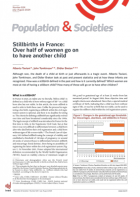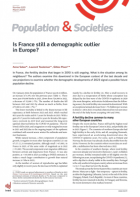
New Demographic Scenarios in the Mediterranean Region
Download the English version on the website : http://cahier_youssef_courbage.site.ined.fr/
Collection : Cahiers
n° 142, 1999, 200 pages
Chapitre 1 La nécessité de revoir les projections démographiques
1. Les projections démographiques des Nations unies. De la version 1994 à la version 1998
2. Les projections démographiques de l'IIASA (International Institute for Applied Systems Analysis) pour l'Afrique du Nord, 1996
3. Approche méthodologique
4. L'effet de l'instruction sur la fécondité
5. Les ambiguïtés de la relation entre instruction et fécondité dans la région méditerranéenne
6. Les hypothèses sous-jacentes aux scénarios de baisse de la fécondité
7. La méthodologie de la projection
Chapitre 2 Résultats détaillés par pays
I. Union du Maghreb arabe
1. Maroc 2. Algérie 3. Tunisie 4. Libye 5. Mauritanie
II. Plaine du Nil
1. Égypte 2. Soudan
III. Moyen-Orient du Nord
1. Syrie 2. Liban 3. Irak 4. Jordanie 5. Palestine 6. Israël 7. Turquie
IV. Moyen-Orient du Sud
1. Yémen 2. Arabie saoudite 3. Principautés du Golfe : Bahreïn, Koweït, Oman, Qatar, Émirats arabes unis 4. Iran
Chapitre 3 Implications de la croissance démographique sur la rive sud
1. La fin de l'explosion démographique
2. Quelles implications ?
Vue d'ensemble et conclusion




















